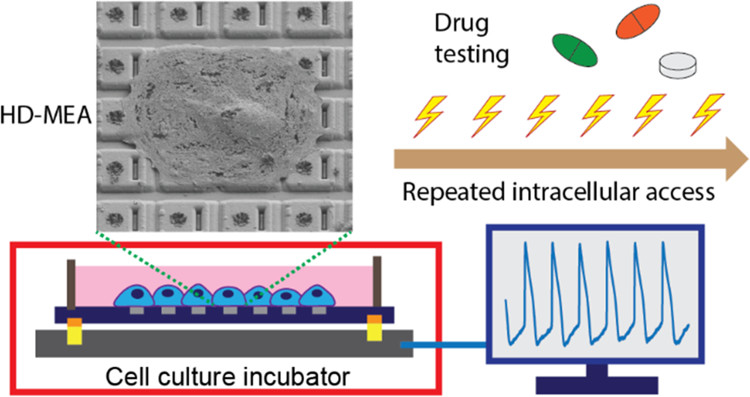Intracellular-like recordings from human iPSC-derived cardiomyocytes
Arrays of hundreds of porous Pt-black-coated electrodes can be used to simultaneously record intracellular-like signals of cardiomyocytes at large scale repeatedly over extended periods of time.


Pharmaceutical compounds may have cardiotoxic properties, triggering potentially life-threatening arrhythmias. To investigate proarrhythmic effects of drugs, it is necessary to characterize the electrophysiology of cardiomyocytes in vitro. In our recent paper (J. Lee, T. Gänswein, H. Ulusan, V. Emmenegger, A. Saguner, F. Duru, A. Hierlemann, "Repeated and on-demand intracellular recordings of cardiomyocytes derived from human-induced pluripotent stem cells", ACS Sensors 2022), we demonstrate how porous Pt-black electrodes, arranged in high-density microelectrode arrays, can be used to record intracellular-like signals from cardiomyocytes at large scale repeatedly over an extended period of time. The developed technique, which yields highly parallelized electroporations using stimulation voltages around 1 V peak-to-peak amplitude, enabled intracellular-like recordings at high success rates without causing significant alteration in key electrophysiological features. In a proof-of-concept study, we investigated electrophysiological modulations induced by two clinically applied drugs, nifedipine and quinidine. As the obtained results were in good agreement with previously published data, we are confident that the developed technique has the potential to be routinely used in in vitro platforms for cardiotoxicity screening.